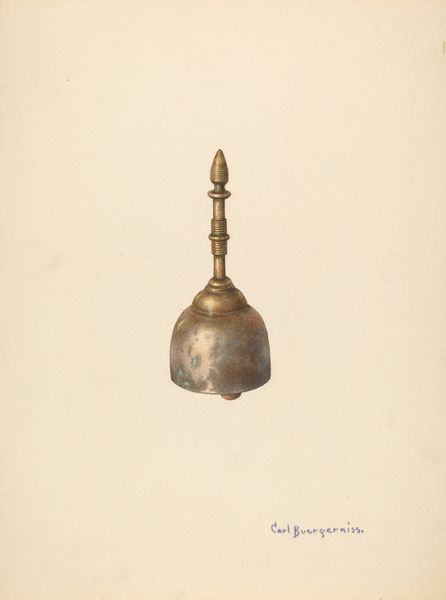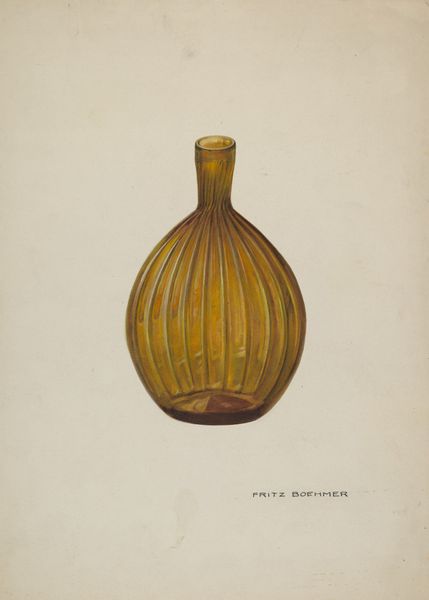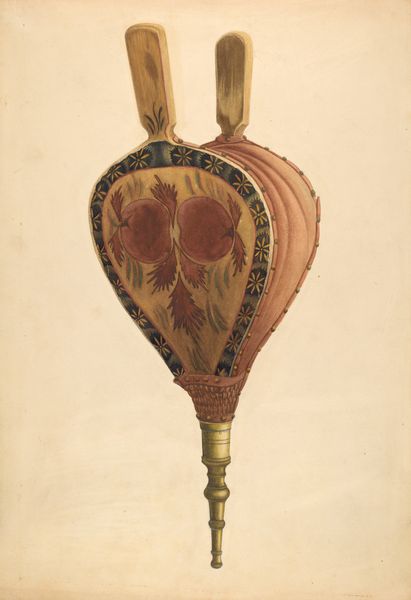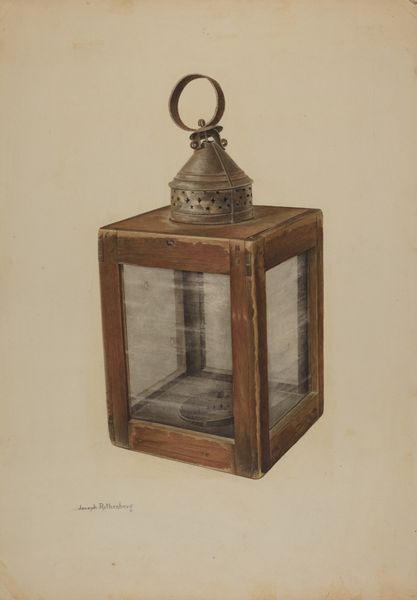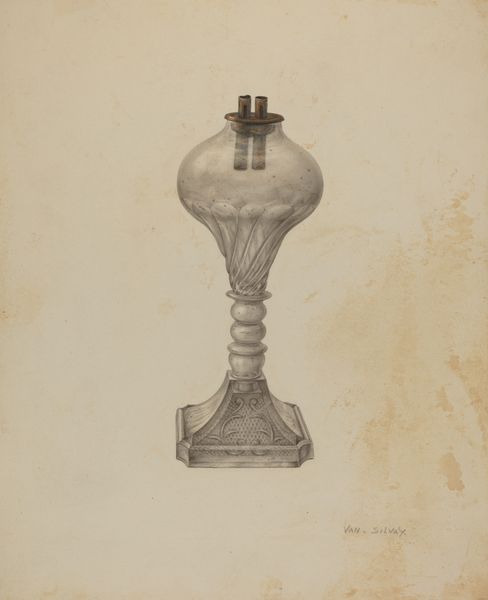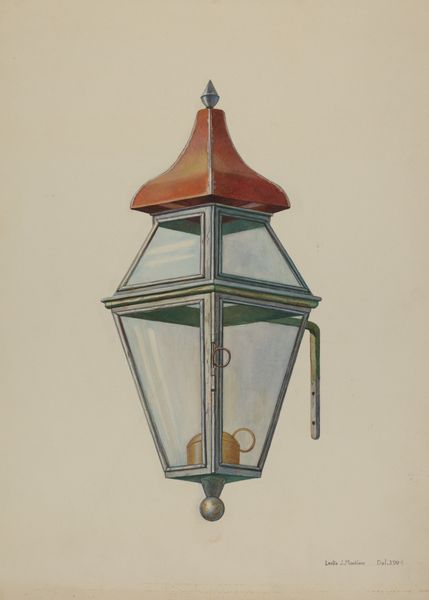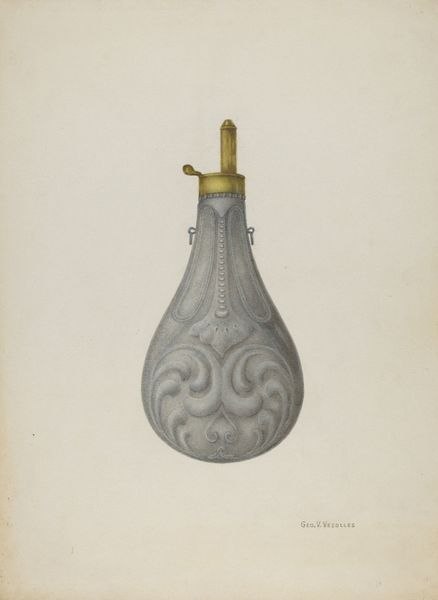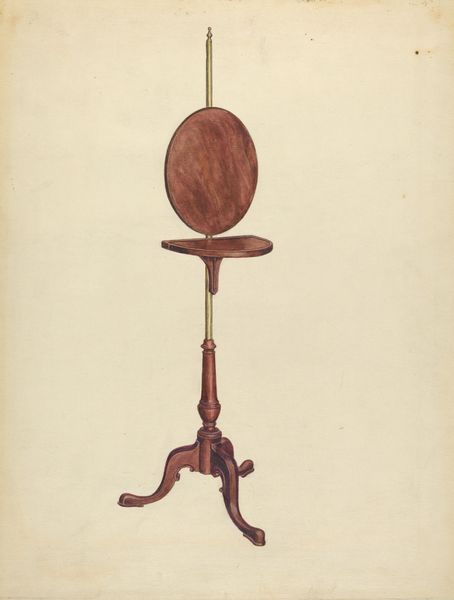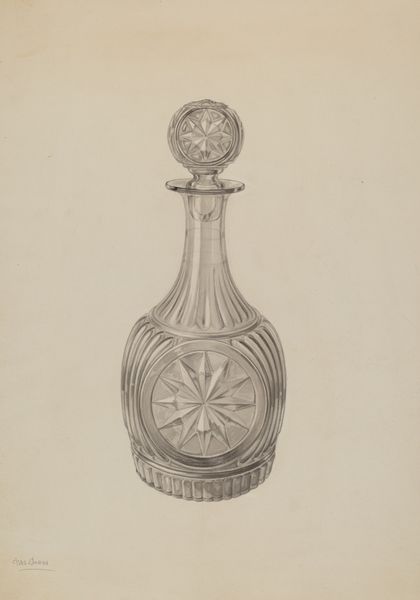
drawing, watercolor
#
drawing
#
watercolor
#
ceramic
#
watercolor
Dimensions: overall: 29.4 x 23 cm (11 9/16 x 9 1/16 in.) Original IAD Object: 30 1/8" high; 13 1/4" wide
Copyright: National Gallery of Art: CC0 1.0
Curator: The drawing before us is titled "Knife and Spoon Box", attributed to Harry Eisman, around 1953, skillfully rendered in watercolor and drawing. Editor: Initially, I perceive an object of austere symmetry, a rigid geometry softened by the fluidity of watercolor. It evokes a solemn yet curious sensation; its redness commands immediate attention. Curator: Red can carry various symbolisms depending on the context. In this setting, it suggests ceremonial importance and the value assigned to everyday objects like knives and spoons. Enclosing them elevates their purpose within domestic life, perhaps echoing traditions or status. Editor: Interesting. What captures me is the box's form: its stacked tiers leading up to that spherical lid. The vertical striations along the vessel seem designed to guide the eye, lending a certain dynamism to an otherwise static form. Curator: Yes, and those are evocative vertical markings, they visually suggest staves; one could extrapolate this to staves being representative of support, perhaps within community or domestic environments. It subtly echoes shared meals and familial ties—basic needs that define communities through all eras of time. Editor: It makes me consider the texture of the imagined box, whether ceramic or wood, feels undeniably tactile—those light-catching rims giving definition to each plane. There’s also an illusionary aspect; a flat plane somehow achieving considerable three-dimensionality through skilled draftsmanship. Curator: The meticulous rendition implies the tangible history within and perhaps familial, domestic heritage of objects—their journeys told in these mundane instruments used daily yet treated with dignified artistry. These forms carry narratives. Editor: Precisely. Considering the relationship between form and medium here—watercolor gives this rigid structure an unanticipated ethereal quality, nearly defying material substance even as its geometry implies solid reality. Curator: Right, which raises queries on domestic roles. Were these depictions a tribute to practical home craft? Symbolically binding functional art and the narrative importance within household roles? I wonder what the true context would reveal, as social contexts dramatically sculpt personal memories around objects. Editor: It offers so much scope for discussion on historical representation versus perceived utility. Curator: Absolutely. Food for thought, pardon the pun. Editor: A delicious conversation.
Comments
No comments
Be the first to comment and join the conversation on the ultimate creative platform.

